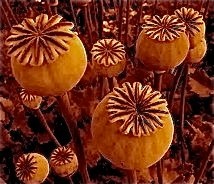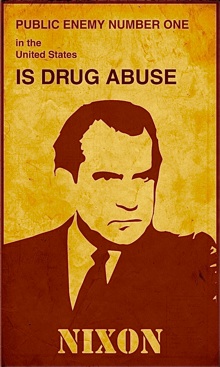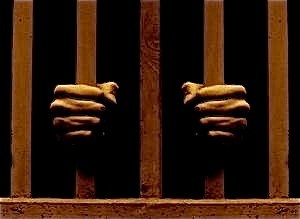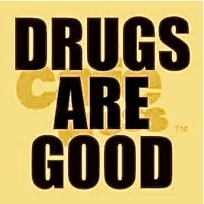Gack
THE NARCO-ECONOMIC PARADIGM

But as devastating as those two things were, there was a third and fourth problem, in that genetically modified food crops began to fail catastrophically, while at the same time, what little remained of the world’s fresh water supply was taxed beyond its ability to hydrate those failing crops or provide drinking water for the 7.5 billion thirsty humans, who had wasted fresh water regularly over the years doing things like watering grass lawns or flushing it down the toilet.
While the average ordinary world citizen was taken by surprise when the world’s economies collapsed and food and fresh water shortages became a feature of everyday life, global governments, on the other hand, were not at all surprised for they employed thousands of people to study statistics, trends, and economics, so by the time these things came to pass, global governments already expected these things to happen and had plans to recover. In fact, those plans were already put into effect almost two full decades prior to events of 2021.
Understanding that weapons sales were peaking during the 1990’s, and with the collapse of the Cold War paradigm, leading corporate defense contractors and the global military industrial complex (who depended on most of the world being caught up in some kind of war like conflict), created a new war paradigm for the 21st century. This paradigm began with a spectacular event, the destruction of the World Trade Center twin towers in New York City. Two presumably hijacked airliners flew directly into both buildings, killing thousands in the process. The event was blamed on several international terrorist organizations, who themselves were part of a global conspiracy to usher in the new war paradigm called the War on Terror.
This was a war that did not require an evil empire or nation as the enemy, but spanned numerous nations and possibly the entire planet as it was conjectured that terrorists had cells all over the middle eastern regions and there was also potential for domestic terrorism, leading to the United States of America invading two Middle Eastern nations that had little to do with the attack in New York City, that of Iraq and Afghanistan. But again, the world’s first but declining superpower was planning things decades in advance and although those two Middle-Eastern nations had little to do with terrorist activity, both were strategically important for two different reasons.
First, Iraq was geographically centered in the Middle-East and was an ideal staging area for an American military base. Eventually the United States’ largest overseas military base was constructed outside Baghdad. Such a base seemed unnecessary in most Americans’ minds in the early 2000’s. But by 2021, the importance of having such a base right in the middle of the geographical region where most of the world’s remaining petroleum came from and with Resource Wars being the order of the day, it made perfect and logical sense, given that Americans were still the planet’s leading consumers of petroleum products.
As far as Afghanistan was concerned, invading and securing that nation eventually made sense as well. This was because Afghanistan was the world’s top producer of raw opiates. Global governments, understanding weapons and petroleum as the basis for economies were failing, needed an entirely new economic model and one that was based on a renewable and formerly illegal untapped resource. It was hard to understand at first, but later it made perfect sense when the War on Drugs was abandoned by 2020 and all forms of drugs were decriminalized. Thus, the desired renewable resource was narcotics and then came the rise of the Narco-Economic model and the installation of the Global Narco-Economy by 2021.

In order to understand the Global Narco-Economy one must have a clear idea in regards to the previous paradigm, a planet waging a 40-year futile War on Drugs. Drug prohibition began around the turn of the 20th century in the United States. Prior to the change in attitude about drugs and immediately after the civil war, the introduction of the hypodermic syringe caused a third of the United States’ population to become addicted to either morphine or heroin. Heroin was introduced in an attempt to use a derivative of morphine to cure morphine sickness in a time before the word addiction was coined.
Back then it was possible to mail order as much morphine as one desired from Sears and Roebucks and the catalog also sold hypodermic syringes. Another popular drug was cocaine which was used as a pick-me-up additive in soda pop, thus the cocoa in Coca-Cola. It was being prescribed and recommended for use to treat all forms of clinical depression and was, in its day, considered to be a miracle drug, as opposed to being considered dangerous after the anti-drug propagandists demonized the white powder, making such outrageous claims as “it made the Negroes go insane and its use among them resulted in them seeking to rape white women.” They also demonized the completely harmless marijuana saying if one smoked even a little of the weed, one would go insane and turn into a sexual deviant. Deviant sexuality became a popular boogeyman in uptight puritanical, white Protestant America and such claims worked well as a scare tactic.
In just a few years all of the popular drugs were outlawed with stiff penalties applied for possession and the average person believed the anti-drug propaganda and passed their attitudes towards drugs down to the next generation and for a time the anti-drug propaganda seemed to be working, as only a very small percentage of the population continued to partake in drugs. But by the 1950’s, a new class of drug became a common household item. that of pep pills and diet pills, both being based on methamphetamine and which were particularly potent. For people who couldn’t manage to get a prescription for pep pills or diet pills from a doctor, amphetamine powder was also found in over-the-counter decongestant capsules that people broke open ingesting the entire contents to get a speed thrill for just $.50 a dose.
Eventually these uppers or “speed” got demonized just like all the rest of the already illegal drugs. It fell out of favor with physicians who previously prescribed billions of pills to housewives, blue collar workers, and especially truck drivers who now had to find other sources for uppers to stay awake during long hours on the road. By then it was the 1960’s and drugs of all types found an entirely new audience. Then along came the invention of an entirely new and astonishingly powerful substance known as lysergic acid diethylamide or L.S.D. A tiny dose of L.S.D. on a sugar cube caused a profound psychedelic experience that could last up to 12 hours. The effect of the drug was thought to expand ones consciousness and was widely used and perfectly legal for any number of years, but eventually it too was demonized and outlawed. By then the new drug culture was here to stay and drug use became commonplace throughout the next decades, reaching epidemic proportions in the mid 1980’s and 1990’s with the introduction of crack cocaine, a cheap cocaine crystal rock one smoked. Then there was a resurgence of heroin as a popular alternative to crack cocaine, and rampant abuse of cheap homemade methamphetamine known as “kitchen crank.”

In response to the drug epidemic, politicians campaigned and promised to rid America of its drug problems and after election one president became famous for his anti-drug legislation, funneling billions of dollars into law enforcement, greatly expanding anti-drug infrastructure such as him sponsoring the creation of the Drug Enforcement Agency and also sponsoring legislation for tougher penalties for drug possession or distribution. New types of drug laws were created by the future administrations when United States judges were mandated by something called Mandatory Sentencing Guidelines, which essentially tied the judges’ hands concerning the kinds of sentencing they could hand out in drug possession or drug distribution cases. Mandatory Sentencing and another crime bill known as Three Strikes Policy, mandated life imprisonment for a third felony conviction resulting in the prison populations growing exponentially until by the 2000’s the United States prison population was the largest in the civilized world, numbering around 3 million convicts. And that number didn’t even count everyone else in county or city jails. Nor did it include those on probation, or who paid heavy fines or were under house arrest and forced to wear an electronic ankle monitor which would alert authorities if they left the vicinity of their homes or went somewhere they were not authorized to venture to or for those who failed to return in the allotted time.
Thus because of the rise of the Prison Industrial Complex and because of the rising costs of keeping such a tremendous prison population, some states sold their prisons to corporations who would run them more efficiently meaning these corporations primary product was incarcerated human beings. There are two features in regards to this that should be noted. First, by 2010, the United States prison population was greater than the combined populations of five U.S. states, meaning literally the United States was actually composed of 45 free states and five prison states! So much for America being the land of the free! Secondly the corporations billed taxpayers $50,000 per year per convict, meaning that any American who made less than $50,000 a year or that lived at poverty levels was actually worth more to the corporations as a convict than as a free citizen or as a consumer. But although all of that was true and there were more people in jail for drug offenses than ever before, large segments of the population continued to do drugs of all types on a daily basis despite the severe risks involved.
Another component of the War on Drugs paradigm was the futile efforts on the part of various law enforcement agencies involved directly or indirectly to enforce drug laws. The reasons these efforts proved futile was because of the tremendous amounts of money floating around from the illegal drug black market meaning there was also tremendous opportunity for corruption on the part of law enforcement personnel. Over the years, corruption on the part of these agencies became commonplace and the norm because without the participation of law enforcement in all aspects of international drug trafficking, meeting the demand for all the drugs wanted by consumers on a daily basis, 24-hours-a-day on a global scale, would be impossible.
The official story was that drugs were being brought into the United States or other countries in relatively small batches carried on the backs of the so called “drug mules” and occasionally in larger quantities in a motor vehicle or boat or small aircraft, even small submarines. The general public believed this story, regardless of the fact that since all forms of drugs were made available in every single city, town, village, and hamlet in all 50 American states including Hawaii and Alaska, 24-hours-a-day, 7-days-a-week, 365-days-a-year and because the same was true everywhere else in the world, logistically speaking, the amounts of drugs being consumed on a daily basis were actually in the megatons! Such consumption would require a massive, routine infrastructure of large transport vehicles such as cargo aircraft, freight trains and semi-tractor trailers full of drugs as well as millions of people involved in the global distribution of said drugs just to meet the daily demand and keep all the drug peddlers supplied with the amount of drugs they sold on a daily basis.

But the prisons were full of people incarcerated for drug possession and only occasionally did a drug distributor or one of the so called drug kingpins get arrested. In any honest estimation there should have been tens of thousands of dealers who got caught. But that wasn’t true despite the fact there were numerous law enforcement agencies supposedly trying to combat the big drug cartels on a global scale and every nation on Earth also had the same types of drug prohibition laws, law enforcement personnel, and prisons full of drug offenders. But it was drug prohibition itself that created the vast amounts of cash money that changed hands. First, it led to law enforcement personnel becoming corrupt and many of them getting on the payroll of drug cartels or drug prohibition was utilized by inner city drug gangs as a way to make big profits for themselves. Next, there was bribe monies or sales monies that corrupt agents could make from redistribution of confiscated drugs. Then there was billions of dollars of legitimate money being doled out to these agencies by federal and state governments, the legitimate payrolls for being a law enforcement officer or agent, and all the money being given to lawyers on both sides of the issues. Finally, there were fees the court system collected in direct court costs and large fines being laid on drug offenders plus all the tax money being collected by the prison industrial complex, as well as all the money corrupt prison guards and prison staff could collect smuggling in drugs and everything else prisoners wanted and were willing to pay high prices for. All of these things were components of what eventually became the world’s third largest economy known as the Illegal Drug Trade.
Thus, when all else failed, the third largest economy was the obvious choice to become the world’s new primary economy which, given that the demand for drugs was almost limitless already and given that production of drugs was renewable and cheap in relation to the prices people were willing to pay for small amounts, it was a perfect economic model. Also the distribution infrastructure was already in place, so all that need be done was to legitimize everyone already involved and allow them to continue with what they were already involved in and were good at doing. After that, all that was required to really set everything into motion was to reeducate to public about drugs based on an “It’s good for you,” or a “recommended consumption basis” as opposed to the previous “Prohibited due to being a danger to public health” paradigm.

Doing that was only a matter of advertising and clever slogans. They even went as far as to promote casual drug use as being patriotic despite forty years of labeling drug dealers and users as a kind of threat to national security. The general public didn’t really require strong motivations to begin regular, legal drug consumption since half of them were already doing so. Thus came the era, when parents gave their babies heroin to quiet them, and parents gave their older children THC pills (the active ingredient in marijuana) right along with their daily vitamins, as they themselves started their morning routines with a couple of lines of cocaine after swallowing a couple methamphetamine pills and washing it down with a beer. Then they did more of the same after lunch and during their 15 minute daily breaks at work, and they then came home and consumed even more drugs, ending their daily drug consumption with a couple strong sedatives such as barbiturate sleeping pills to counteract all the speed they already did.
Sure people often overdosed and died, but for the most part people learned how to handle large quantities of drugs on a daily basis without killing themselves so as high as the overdose numbers may have risen to, the overwhelming majority of the population consumed drugs with few real consequences, even if doing so was shaving years off their expected lifetimes. By 2022, the Narco-Economy was in full swing, and life was one big party, even if in trade for legal drugs the masses already lost 99% of the rest of their personal freedoms and constitutional rights, all of which were suspended or revoked completely by then. Everyone was so high and stoned they hardly cared about all the things they could no longer do. After all, the best thing about drugs was the way they pacified people and now 100% of the planet’s population was definitely pacified.
THE CHEMIST
Marshall Crenshaw and his wife Carlotta woke up as usual at 7 a.m. to their wind-up bedside alarm clock bell. To alleviate the morning fog and their groggy dispositions, they shared a small flask of Quick-Start Brand nasal methamphetamine spray, taking turns injecting the spray up both their nostrils. The effect of the spray was almost instantaneous going to work in their brains and nervous systems in less than a minute. It left both feeling refreshed and ready to start their morning routine.
Marshall took his customary place at the head of the kitchen table as Carlotta entered the kitchen carrying their one-year-old baby girl, Carol, followed by their 6-year-old son, Carlton. Carlotta placed the baby in a highchair, then, scooted it up to the side of the kitchen table, while Carlton climbed into his usual seat on the opposite side of the table. Marshall read the newspaper as Carlotta poured Soy Flakes dry cereal into bowls in front of the children then added cold artificial milk into the bowls, which the children eagerly began to consume. Marshall had to wait few minutes for his breakfast so Carlotta could fry up four synthetic eggs with soybean wafers, two for her and two for Marshall.
After eating breakfast, Carlotta got everyone’s daily drug rations out of the kitchen cabinet. They were organized in seven-day pill boxes with each family member’s name written on a label. Opening Monday’s slot in her husband’s pill box, Carlotta gave Marshall his pills consisting of 180 milligrams of Rexlor Peace of Mind, an over-the-counter antipsychotic used to ward off stimulant induced psychosis. Next came 90 milligrams of Fillazine Happy Pills, an over-the-counter anti-depressant used to ward off depression stemming from coming down off of stimulants. Then he took 500 milligrams of Daily Grind Brand methamphetamine pills used to power through his 12-hour work day in the laboratory. Then to take the edge off the stimulants, Marshall swallowed a 1200 milligram THC pill, THC being the active ingredient in marijuana, which would give him a mild buzz and a mellow physical presence. Finally to improve his overall mood, Marshall inhaled a couple lines of 45% pure powder cocaine up each of his nostrils, then handed the other two rails of cocaine to Carlotta who snorted them after she herself took 500 milligrams of methamphetamine as a daily pick-me-up and part of her diet plan, a 1200 milligram THC pill, and her own preferred brands of antipsychotics and antidepressants, Bozine Plus and Gromix Daily.
Now it was time to dose the children. Carlotta started with Carlton giving him a spoonful of pediatric antipsychotic syrup, followed by a chewable combination THC/vitamin pill then gave him his pediatric methamphetamine anti-ADHD shot. The baby got a smaller spoonful of the pediatric antipsychotic syrup, a spoonful of Baby Magic Brand 10% Heroin Calming Syrup followed by her own infant’s dose, chewable combination THC/vitamin pill.
After everyone got their morning doses, Carlotta put the baby in her walker, sent Carlton off to elementary school, after packing him a lunchbox with his mid-day drugs in a pill box, then she gave Marshall his own larger lunchbox, with his mid-day drug supply in a pill box, too, in addition to whatever drugs he already had supplies of in his locker at work. Marshall took the lunch box, kissed his wife goodbye and left for the laboratory. Carlotta took her customary seat on the living room couch, turned on the television and lit a marijuana joint to get in the mood for her morning game shows and afternoon soaps which she would enjoy with her mid-day Bloody Mary cocktails and shot of 45% pure heroin.
****
The Crenshaw’s lived in downtown Chicago, Illinois, so Marshall took a city bus to work, as did most people after the new rise of public transportation that resulted from the outrageous cost of fuel for automobiles and people preferring to get intoxicated all the time. They didn’t want to get busted for driving a motor vehicle under the influence, because it was still illegal, even though all manner of drugs was perfectly legal and employers didn’t care if their employees took drugs while on the job. To compensate, the public demanded and eventually got better public transportation so that by 2023 hardly anyone drove a car for themselves preferring to get wasted and take the bus or travel in the abundant cheap multi-passenger taxis.
Marshall arrived at the massive Narcon Pharmaceuticals plant, where he worked as a top research and development chemist. It was Marshall’s job to experiment with chemicals to develop new recreational drugs. Other chemists in the laboratory worked to develop new therapeutic drugs. Narcon Pharmaceuticals manufactured a broad range of drugs ranging from the classics to the latest designer substances developed by Marshall or members of Marshall’s team. The drugs were given catchy brand names and were marketed to the public in massive advertising campaigns. Some examples of Narcon’s products are as follows:
•Cona Buds Columbian Gold (marijuana)
•Best Mex Mexican Dirt Weed (marijuana)
•Kentucky Censamilla (marijuana)
•Mild Sweet Leaf (marijuana)
•Buzzo (100% pure THC tablets)
•Buzzo Jr. (pediatric combination 50 % pure THC/ Vitamin tablets)
•Peruvian Marching Powder (45% pure powder cocaine)
•Pebbles (65% pure smoked rock cocaine)
•Lift (45% pure cocaine/saline suspension nasal spray)
•Blast Off (45% pure cocaine/saline injectable suspension)
•Quick Start (35% pure methamphetamine/saline suspension nasal spray)
•Daily Grind (45% pure methamphetamine tablets)
•Attention Getter (pediatric 65% pure methamphetamine/saline injectable suspension)
•Attention Getter Jr. (35% pure methamphetamine/saline injectable suspension)
•Cloud Nine (35% pure heroin/saline injectable suspension)
•Puff (35% pure heroin smoked resin)
•Baby Magic Brand 10% Heroin Calming Syrup (pediatric 10 % pure heroin syrup)
•Numb (35% pure synthetic pain killer tablets)
•Classic Acid (100% pure L.S.D. paper blotter tabs)
•XTC ( 100% pure Exstasy tablets)
•Freak Out (100% pure synthetic psychedelic compound tablet)
•Zonkers (100% pure synthetic psychedelic compound tablet)
•Ga-Ga (100% pure synthetic psychedelic compound tablets)
•Shrooms (100% pure psilocybin extract ampules)
•Buttons ( 100% pure refined peyote wafers)
•Mescalinni (100% pure mescaline extract ampules)
•Rexlor Peace of Mind (over-the-counter antipsychotic)
•Bozine Plus (over-the-counter antipsychotic)
•Fillizine Happy Pills (over-the-counter antidepressant)
•Gromix Daily (over-the-counter antidepressant)
•Studly Do-right (over-the-counter male/female sexual enhancement compound tablets)





